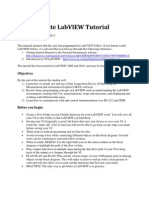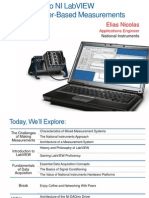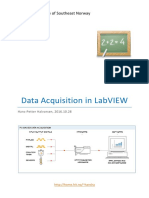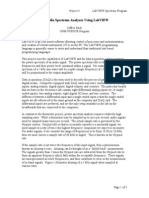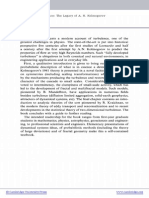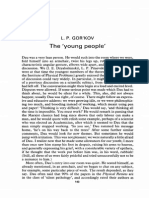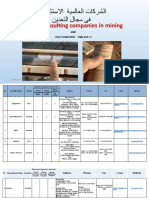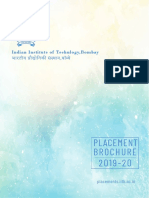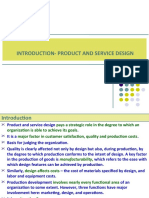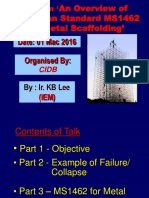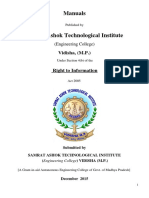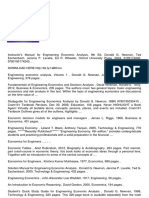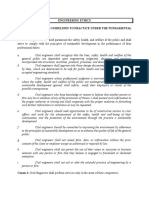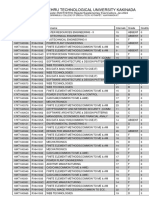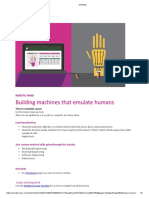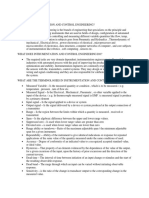Data Acquisition with LabVIEW
Engineering System Investigation Process
Biomedical Engineering
Technical Communications
Electrical & Computer Engineering
Selection of Engineering Materials
Ma
th e
Physical & Mathematical Modeling
ma t ic s
y Ph
Processes to Make Products
s ic
Hands-On
Engineering Discovery
Minds-On
Engineering Measurement
Social Science
Engineering Analysis & Computing
Teamwork
Mechanical Engineering
Professionalism
Civil & Environmental Engineering
Engineering System Design Process
Data Acquisition with LabVIEW: Introduction K. Craig 1
�Modern Multidisciplinary Engineering System
Other Components
Communications
Operator Interface
Human Factors
Computation
Software, Electronics
Actuation
Power Modulation Energy Conversion
Simultaneous Optimization of all System Components Physical System
Mechanical, Fluid, Thermal, Chemical, Electrical, Mixed
Instrumentation
Energy Conversion Signal Processing
Data Acquisition with LabVIEW: Introduction
K. Craig
�Information Domain
Digital Set Point
Sampled & Quantized Measurement
Digital Computer
Sampled & Quantized Control Signal
A/D Converter
Sampling Switch
Sampling System
D/A Converter
Anti-Aliasing Filter
Sensor
Plant / Process
Actuator
Power Domain
Data Acquisition with LabVIEW: Introduction K. Craig 3
�Signal Classification
Discrete in Time Discrete in Amplitude Continuous in Amplitude Continuous in Time
D-D D-C C-D C-C
Data Acquisition with LabVIEW: Introduction
K. Craig
�Introduction
Measurement System
This term measurement system includes all components in a chain of hardware and software that leads from the measured variable to processed data. In a modern automobile there are as many as 40 50 sensors (measuring devices) used in implementing various functions necessary to the operation of the car. Knowledge of the instruments available for various measurements, how they operate, and how they interface with other parts of the system is essential for every engineer. Modern engineering systems rely heavily on a multitude of sensors for monitoring and control to achieve optimum operation.
Data Acquisition with LabVIEW: Introduction K. Craig 5
� Every application of measurement, including those not yet invented, can be put into one of these three categories or some combination of them:
Monitoring of processes and operations Control of processes and operations Experimental engineering analysis
All Engineers must be able to confidently, with minimal error, and automatically measure physical properties with a computer data acquisition system (DAQ). Common Applications
Input to a design project Evaluate a physical / mathematical model Test a product before shipping quality control Conserve energy; Understand and preserve the environment Help an operator control a machine; Provide safe workplaces
K. Craig 6
Data Acquisition with LabVIEW: Introduction
� Why Automate Measurements? Reduce the risk of errors Remove humans from system doing repetitive tasks Perform complex tasks that can not easily be done by hand Automate systems Avoid having to write new computer programs Used extensively in industry DAQ provides essential information for product testing and new product design. DAQ also improves speed and precision by controlling computer hardware with software. Software design is extremely important to stop the spread of poorly-programmed applications used in industry and research today. These poorly-programmed applications run slow, have errors, use too many computer resources, often cause energy inefficiency, and are difficult to read, scale up, and maintain.
Data Acquisition with LabVIEW: Introduction K. Craig 7
� Correct, successful DAQ applications require knowledge of hardware and software. The LabVIEW general graphical programming language is an excellent environment for learning how to program correctly, and it is more enjoyable than learning the syntax and format common to text programming. DAQ applications are not limited to making measurements. They also include analyzing and presenting data and performing real-time control.
Data Acquisition with LabVIEW: Introduction
K. Craig
� In making measurements, some things to consider are:
What variables should be measured? Range and precision of values to be measured? How often does data need to be recorded? Timing of measurements? How much data to collect? Reliability of measurement system? Budget and system cost? What sensors are available? What type of signals will be generated? Where will the system be located?
Data Acquisition with LabVIEW: Introduction
K. Craig
� Error
Difference between true value and recorded value. Two main sources:
Transducer / Instrument errors Errors caused by the person taking the measurements % accuracy = 100 * (error / true value) % precision = 100 * (measurement mean of n steady-state measurements) / (mean of n steady-state measurements) Accuracy is the degree of closeness of a measured or calculated quantity to its actual (true) value. Precision, also called reproducibility or repeatability, is the degree to which further measurements or calculations show the same or similar results. The results of calculations or a measurement can be accurate but not precise, precise but not accurate, neither, or both.
K. Craig 10
Described in two ways:
Data Acquisition with LabVIEW: Introduction
�High Precision Low Accuracy High Accuracy Low Precision
Data Acquisition with LabVIEW: Introduction
K. Craig
11
� Types of Transducer/Instrument Errors
Hysteresis If you make a set of sequential measurements upscale and downscale and there is a difference in the values, the error is called hysteresis. Linearity Some transducers/instruments have a linear relationship between the property measured and their output value. Linearity error occurs when the measured value doesnt exactly fit the linear relationship. Repeatability A repeatability error occurs when you measure the same value repeatedly over time and the value varies. Bias Some transducers/instruments give consistently high or low values, causing bias error.
Data Acquisition with LabVIEW: Introduction
K. Craig
12
� Resolution Errors result from the analog-to-digital conversion process in data acquisition. Zero offset If the transducer/instrument should read zero, but gives a nonzero value, it has a zero-offset error. Dynamic Dynamic variables vary with time. An error occurs when the dynamic response of the transducer/instrument does not instantaneously capture the variable value at the time the measurement should occur. Overall The overall error of a transducer/instrument is the square root of the sum of all the instrument errors.
Data Acquisition with LabVIEW: Introduction
K. Craig
13
� Types of Errors Caused by the Person Taking the Measurements
Reading reading the value incorrectly Dynamic reading inability to read and record the data quickly enough to capture the dynamic variations in the values Interpolation incorrect interpolation between the markings on a meter Misusing an Instrument not following the correct procedures Misapplication of an instrument using the wrong transducer/instrument for the measurement Inadequate calibration using an instrument without knowing its errors Recording typing or writing the measurement value incorrectly
Data Acquisition with LabVIEW: Introduction K. Craig 14
� Date Acquisition Process
Steps to Data Acquisition 1. Converter physical properties to electrical signals with transducers 2. Convert electrical signals into digital data for computer processing 3. Process digital data 4. Display and/or record test data
Data Acquisition with LabVIEW: Introduction
K. Craig
15
� Common transducers for measuring physical properties
Data Acquisition with LabVIEW: Introduction
K. Craig
16
� Common Data Types
Data Acquisition with LabVIEW: Introduction
K. Craig
17
� LabVIEW Program
LabVIEW program to count the number of zeros in an array
Data Acquisition with LabVIEW: Introduction
K. Craig
18
� Some other uses for LabVIEW
Can be used to create Virtual Instruments (VI) Virtual instruments can be easily transported unlike traditional instruments Can perform file input, processing, and output Can develop graphical user interfaces
Data Acquisition with LabVIEW: Introduction
K. Craig
19
�Rotary Inverted Pendulum System
(See Video on D2L)
Data Acquisition with LabVIEW: Introduction
K. Craig
20
�LabVIEW Block Diagram
Data Acquisition with LabVIEW: Introduction
K. Craig
21
�LabVIEW Front Panel
Data Acquisition with LabVIEW: Introduction
K. Craig
22






